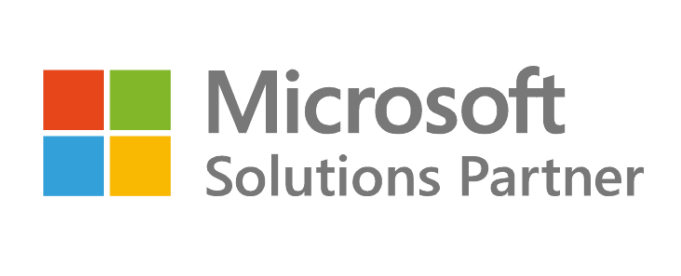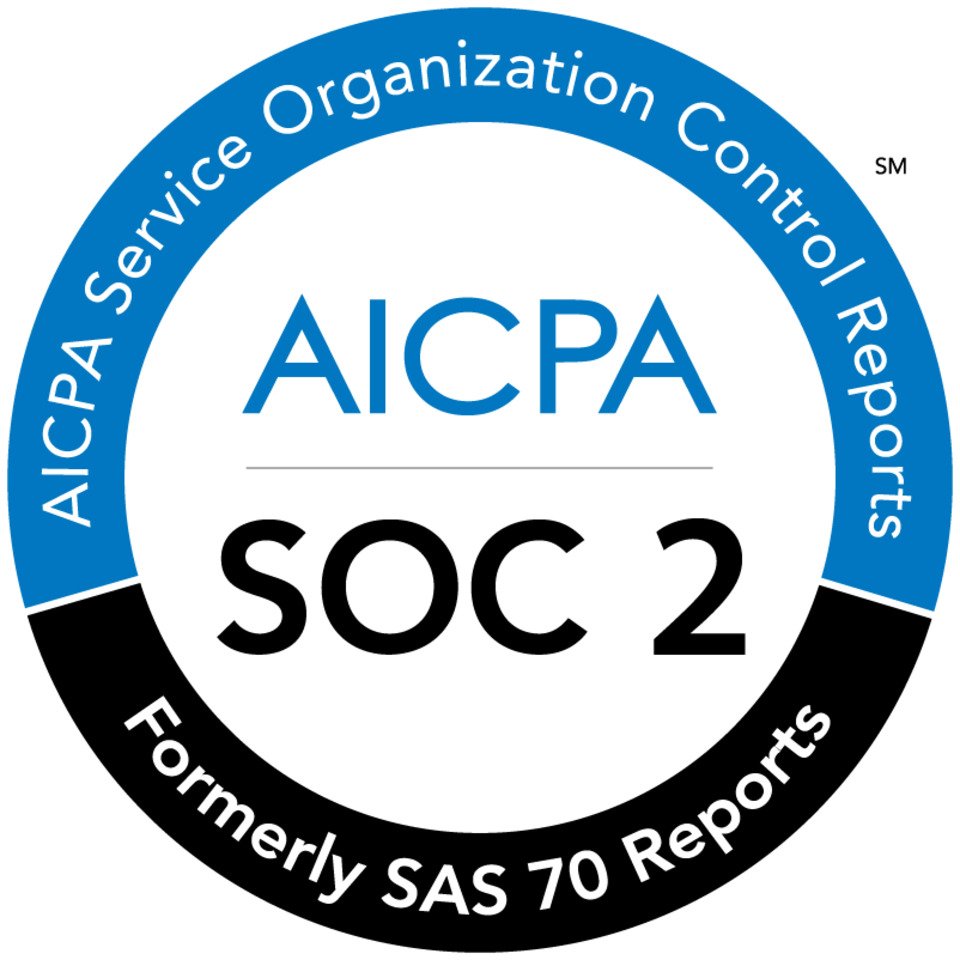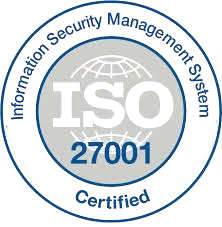Real-Time Market & Risk Intelligence (NLP)
We partner with industry leaders



Industries That Benefit
Banking Institutions
Banks must monitor diverse risks across loan portfolios, counterparties, and market exposures while maintaining compliance with evolving regulations. Traditional approaches create information silos that prevent holistic risk visibility across the organization. Credit risk assessment requires continuous monitoring of borrower financial health and industry conditions. Regulatory compliance demands systematic tracking of policy changes across multiple jurisdictions. Market volatility creates unpredictable impacts on trading books and credit portfolios.
Financial institutions benefit from:
- Early warning of deteriorating conditions affecting loan portfolios
- 60% faster detection of counterparty risk developments
- Comprehensive regulatory change monitoring across jurisdictions
- Integrated risk intelligence across traditionally separate departments
Wealth & Asset Management
Wealth managers need to provide timely insights and recommendations to clients while monitoring portfolio risks across diverse holdings. Traditional approaches struggle to scale personalized intelligence across many client relationships. Client expectations for market insights and investment guidance continue to increase. Portfolio performance depends on early identification of market shifts affecting specific holdings. Regulatory requirements demand comprehensive monitoring of investment risks and ESG factors.
Wealth management firms gain:
- Personalized intelligence aligned with specific client portfolios
- Timely conversation starters for client engagement
- Earlier detection of risks affecting client investments
- Competitive differentiation through superior information capabilities
Investment Firms
Private equity, venture capital, and alternative investment firms face complex investor verification requirements that delay capital deployment and create administrative burdens. Manual KYC processes typically consume 30-40 hours per investment round, creating friction with time-sensitive transactions.
Limited partner verification across institutional, accredited, and retail categories requires sophisticated policy management and documentation. Regulatory requirements vary significantly across jurisdictions, complicating international fundraising. Verification bottlenecks delay capital deployment and fund closings.
Our customized verification workflows provide:
- Appropriate risk-based processes for institutional, accredited, and retail investors
- 50-70% acceleration in capital formation
- Full compliance with increasingly complex investor verification requirements
- Reduced administrative burden on investment teams
Fintech Companies
Financial technology companies must monitor rapidly evolving regulatory landscapes, competitive threats, and market opportunities across diverse business models. Product development cycles require early identification of market trends and customer needs. Compliance challenges multiply as fintech platforms expand across jurisdictions and product categories. Partnership and acquisition opportunities depend on comprehensive market intelligence. Funding and valuation decisions require systematic monitoring of market conditions and competitor activities.
Fintech operators receive:
- Early detection of regulatory changes affecting product development
- Comprehensive competitive intelligence for strategic planning
- Market trend identification supporting product innovation
- Systematic monitoring of partnership and acquisition opportunities
Capital Markets & Trading
Trading organizations depend on split-second decision-making based on comprehensive market intelligence and risk assessment. News flow and market sentiment create immediate impacts on trading positions and portfolio values. Regulatory developments affect trading strategies and compliance requirements. Counterparty risk monitoring requires continuous assessment of financial institution stability. Algorithm performance depends on early detection of market structure changes and emerging trading patterns.
Trading firms benefit from:
- Real-time market intelligence supporting trading decisions
- Early detection of regulatory changes affecting trading strategies
- Comprehensive counterparty risk monitoring and assessment
- Systematic identification of market structure shifts and opportunities
Insurance & Risk Providers
Insurance companies must monitor diverse risk factors affecting underwriting decisions, claims patterns, and investment portfolios. Catastrophic risk assessment requires comprehensive monitoring of weather patterns, regulatory changes, and emerging threats. Claims fraud detection benefits from systematic monitoring of industry patterns and suspicious activities. Investment performance depends on early identification of market risks and opportunities. Regulatory compliance demands systematic tracking of insurance policy changes across jurisdictions.
Insurance organizations gain:
- Comprehensive monitoring of catastrophic risk factors and trends
- Early detection of emerging claims patterns and fraud indicators
- Systematic investment risk monitoring for portfolio management
- Regulatory change tracking across insurance jurisdictions
Crowdfunding & Alternative Finance
Alternative finance platforms must monitor regulatory developments, market trends, and competitive activities across diverse investment categories. Platform risk management requires comprehensive monitoring of borrower and investment performance. Regulatory compliance demands systematic tracking of securities regulations and crowdfunding policies. Market opportunities depend on early identification of emerging investment themes and investor preferences. Reputation management requires monitoring of industry developments and potential controversies.
Platform operators receive:
- Comprehensive regulatory monitoring across alternative finance sectors
- Early detection of market trends affecting investment categories
- Systematic monitoring of competitive activities and platform developments
- Risk intelligence supporting borrower and investment evaluation
Corporate Finance & Treasury Divisions
Corporate finance teams must monitor market conditions, funding opportunities, and emerging risks that affect capital allocation decisions and financial operations. Most organizations lack systematic approaches to external intelligence gathering. Treasury operations require continuous monitoring of interest rate trends, currency movements, and credit market conditions. Strategic planning depends on early identification of industry trends and competitive activities. Regulatory developments create compliance requirements and strategic implications.
Treasury and finance departments receive:
- Early indicators of changing market conditions affecting funding
- Detection of emerging risks to cash flow and operations
- Intelligence on competitor financial activities and positioning
- Systematic monitoring of factors affecting financial planning
Problems or Missed Opportunities We Solve
Information Overload & Analysis Paralysis
Financial professionals struggle to process 5,000+ news articles, reports, and updates published daily across global markets. Most organizations capture less than 15% of relevant intelligence while spending excessive time on manual monitoring.
Our approach:
- Processes 100,000+ information sources continuously
- Filters content based on relevance to your specific interests
- Delivers only actionable intelligence requiring attention
- Eliminates manual monitoring of routine information
Delayed Signal Detection
Traditional intelligence approaches typically identify important market shifts 3-5 days after initial signals appear. This delay creates significant opportunity costs and competitive disadvantages in fast-moving markets.
The solution provides:
- 65-75% faster detection of emerging signals
- Identification of subtle early indicators human analysts miss
- Continuous 24/7 monitoring without attention gaps
- Immediate notification of high-priority developments
Siloed Intelligence Functions
Most organizations maintain separate intelligence functions across investment, risk, compliance, and strategy departments, creating dangerous blind spots and duplicated efforts. These silos prevent connecting related signals across different domains.
Organizations gain:
- Integrated intelligence across traditionally separate functions
- Connection of related signals from diverse sources
- Elimination of departmental monitoring duplications
- Holistic view of interrelated market developments
Language and Geographic Limitations
Human monitoring typically covers only 1-3 languages and prioritizes domestic information sources, missing important international signals and emerging markets intelligence. This creates blind spots in an increasingly global financial ecosystem.
The platform delivers:
- Multilingual monitoring across 25+ languages
- Global coverage including emerging market sources
- Consistent analysis methodology across regions
- Complete elimination of geographic bias in intelligence
Confirmation Bias in Analysis
Human analysts naturally focus on information that confirms existing views while underweighting contradictory signals. This cognitive bias creates significant blind spots in market and risk assessment.
Our technology provides:
- Objective monitoring without confirmation bias
- Equal weighting of confirming and contradicting signals
- Systematic tracking of opposing viewpoints
- Reduced cognitive bias in intelligence gathering
Case Study
Real Results from Financial Leaders
KYC Automation for a German Payments Fintech
A mid-sized German payment gateway with 180 employees processing approximately €700-800M in annual transactions, active in 6 EU markets.
- 28% conversion increased
- 40% improved performance
Conversational AI for a Spanish Insurance Firm
A traditional Spanish insurance provider with 85 years of history, 950 employees, and €280 million in annual premiums across home, auto, life, and commercial lines.
- 28% conversion increased
- 40% improved performance
Real-Time Fraud Detection in UK Digital Payments App
A fast-growing UK-based mobile payment application with 165 employees processing approximately £1.3 billion in annual transaction volume with around 700k active users.
- 28% conversion increased
- 40% improved performance
AI Copilot for Treasury Operations at a Spanish Payment Orchestration Platform
A mid-sized German payment gateway with 180 employees processing approximately €700-800M in annual transactions, active in 6 EU markets.
- 28% conversion increased
- 40% improved performance
Certifications & Compliance



Benefits of Using the Solution

Competitive Information Advantage
Identify market shifts, investment opportunities, and emerging risks substantially faster than competitors relying on traditional intelligence methods. Organizations typically gain 3-5 day advantages in signal detection, creating meaningful alpha generation and risk avoidance opportunities.

Enhanced Decision Quality
Base strategic and investment decisions on comprehensive market intelligence that captures subtle signals human monitoring misses. Decision-makers receive a complete picture of relevant factors rather than the 10-15% of information captured through conventional approaches.

Operational Efficiency
Eliminate thousands of analyst hours spent on routine information monitoring and processing. Organizations typically reduce manual intelligence gathering by 70-80%, allowing skilled professionals to focus on analysis and action rather than information collection.

Reduced Surprise Events
Virtually eliminate "surprise" market and risk events through comprehensive monitoring that detects early warning indicators. Organizations experience 65-75% fewer unexpected developments affecting their portfolios and operations through systematic external intelligence.

Strategic Opportunity Identification
Discover emerging market trends, competitive movements, and business opportunities weeks before they become widely recognized. Early pattern detection creates first-mover advantages in market positioning, capital allocation, and strategic initiatives.
Process Flow

Intelligence Requirements Assessment
The engagement begins with a detailed analysis of your specific intelligence needs, risk exposures, and decision processes. This assessment identifies monitoring priorities, information sources, and alert parameters aligned with your business objectives.
Customized Monitoring Configuration
Intelligence specialists configure the platform to focus on your specific markets, companies, risk exposures, and strategic interests. This customization ensures precisely targeted monitoring rather than generic information gathering.
Information Source Integration
The system establishes connections with relevant information sources, including specialized industry content, subscription services, and proprietary data feeds. This comprehensive source integration provides complete intelligence coverage across all domains.
Alert Framework & Distribution Setup
Custom alert parameters, priority levels, and distribution workflows ensure the right intelligence reaches appropriate decision-makers at the optimal time. This framework aligns with your organizational structure and decision processes.
Initial Operation & Calibration
The intelligence system begins operation with close performance monitoring and refinement of detection parameters. This calibration process optimizes signal-to-noise ratio and ensures high-relevance alerts.
Ongoing Optimization & Evolution
The platform continuously improves through machine learning, user feedback, and periodic review of intelligence effectiveness. This ongoing evolution ensures sustained performance advantages as markets and information sources change.
Why Aspagnul Is the Ideal Partner
Financial Intelligence Specialization
The Aspagnul team combines deep expertise in financial markets, risk management, and natural language processing specifically optimized for financial content. This specialized focus ensures our systems understand complex financial concepts, industry-specific terminology, and subtle linguistic signals that generic NLP solutions miss.
Our financial linguistics specialists have developed proprietary language models trained on millions of financial documents, creating systems that detect nuanced signals in earnings calls, market commentary, and regulatory communications with exceptional accuracy.
Comprehensive Source Coverage
Our intelligence platform maintains connections with over 100,000 global information sources, including premium financial services, regulatory feeds, industry publications, and specialized content not available through general media monitoring. This extensive coverage eliminates dangerous blind spots in external intelligence.
The system processes information from traditionally separate domains—market news, regulatory changes, ESG developments, and risk indicators—providing truly integrated intelligence across all relevant factors affecting financial decisions.
Financial-Grade Signal Processing
Our natural language processing capabilities have been specifically developed for financial applications, with specialized attention to the unique characteristics of market communications, regulatory language, and financial disclosures. This domain-specific approach substantially outperforms generic NLP systems in detecting subtle but important financial signals.
The technology incorporates advanced entity recognition, relationship mapping, and temporal analysis designed specifically for financial intelligence, enabling detection of complex patterns and connections across seemingly unrelated information.
Enterprise Integration Capabilities
The platform connects seamlessly with your existing systems, workflows, and decision processes through secure APIs and flexible delivery mechanisms. This connectivity enables intelligence to flow directly into trading platforms, risk systems, CRM solutions, and collaboration tools where decisions occur.
The solution adapts to your existing technology environment rather than requiring workflow changes, ensuring high adoption and immediate practical value.
Proven Financial Performance Impact
Our market intelligence systems have generated measurable performance advantages for global financial institutions, investment managers, and corporate finance departments. Clients report 30-45% improvements in investment timing, 50-65% reductions in surprise risk events, and millions in avoided losses through early risk detection.
Frequently Asked Questions
Generic monitoring solutions fail in financial applications for three critical reasons. First, they lack the specialized language understanding required for financial terminology, regulatory language, and industry-specific concepts. Our NLP models are trained on millions of financial documents to recognize subtle patterns in earnings calls, regulatory filings, and market commentary that generic systems miss entirely.
Second, our technology incorporates financial context and relationships between entities, understanding how developments affecting one company impact others in its supply chain, competitive landscape, or sector. Finally, our systems detect temporal changes and trend patterns, identifying when communication from a company or regulator shifts in meaningful ways compared to historical patterns. These specialized capabilities deliver 3-5x higher signal detection rates for financial applications compared to generic monitoring approaches.
The system integrates comprehensive global coverage across multiple source categories: financial news and media (7,500+ publications), company disclosures and earnings materials, regulatory agencies (350+ global regulators), specialized industry sources, social and alternative media, and premium financial data services. This breadth eliminates dangerous blind spots in external intelligence gathering.
Coverage includes both English and non-English sources across 25+ languages with consistent analysis methodology, ensuring global intelligence without geographic or linguistic bias. The platform can also incorporate your existing subscription services and proprietary data feeds to provide truly comprehensive monitoring across all relevant sources.
Alert fatigue represents the greatest challenge in financial intelligence, as excessive low-value notifications quickly lead to ignored alerts. Our approach solves this through three complementary methods: intelligent filtering based on relevance scoring, personalized alert thresholds aligned with user priorities, and smart clustering that consolidates related developments into unified insights rather than separate alerts.
The system learns from user feedback, continuously improving relevance through machine learning that adapts to your specific interests and decision patterns. This approach typically reduces alert volume by 85-90% compared to conventional monitoring while actually increasing the capture of truly important signals.
The intelligence platform connects with your environment through multiple integration methods based on your preferences and technical requirements. Options include secure API connections to trading platforms, risk systems, and CRM solutions; email and mobile alerts for time-sensitive intelligence; integration with collaboration tools like Teams and Slack; and a web portal for detailed research and analysis.
These flexible delivery mechanisms ensure intelligence reaches decision-makers within their existing workflows rather than requiring them to adopt new systems or processes. The platform has established integrations with major financial technology providers, enabling rapid deployment without extensive custom development.
Financial organizations typically see improvements in three key areas: decision timing advantages (identifying opportunities and risks 3-5 days faster than manual methods), operational efficiency (70-80% reduction in manual monitoring time), and risk avoidance (50-65% fewer surprise events affecting portfolios and operations).
These benefits translate to measurable financial impact—investment managers report 30-45 basis point performance improvements attributable to superior market timing and risk avoidance, while corporate users cite millions in avoided losses through early risk detection. We establish baseline measurements during initial assessment and track improvements against these metrics to provide clear ROI documentation.
Financial intelligence security forms the foundation of our platform, with bank-grade protection including end-to-end encryption, strict access controls, and comprehensive audit logging. The system maintains complete separation between client environments, ensuring your monitoring parameters, alerts, and usage patterns remain strictly confidential.
All operations comply with financial data protection regulations including ISO 27001, SOC 2 Type II, and GDPR requirements, with regular independent security audits and certifications. These measures ensure your intelligence activities, priorities, and interests remain completely private while maintaining the highest security standards expected in financial operations.
Let’s get in touch
We’re excited to hear from you and to start something special together.
- Money-back guarantee if you don’t receive what we promise.
- Full financial and technical analysis of your current situation.
- Full support from the moment of our first contact.
Quick contact

Turn your financial operations with purpose-built AI solutions that reduce costs, accelerate growth, and ensure regulatory compliance across financial institutions.
